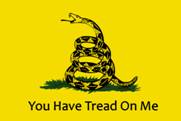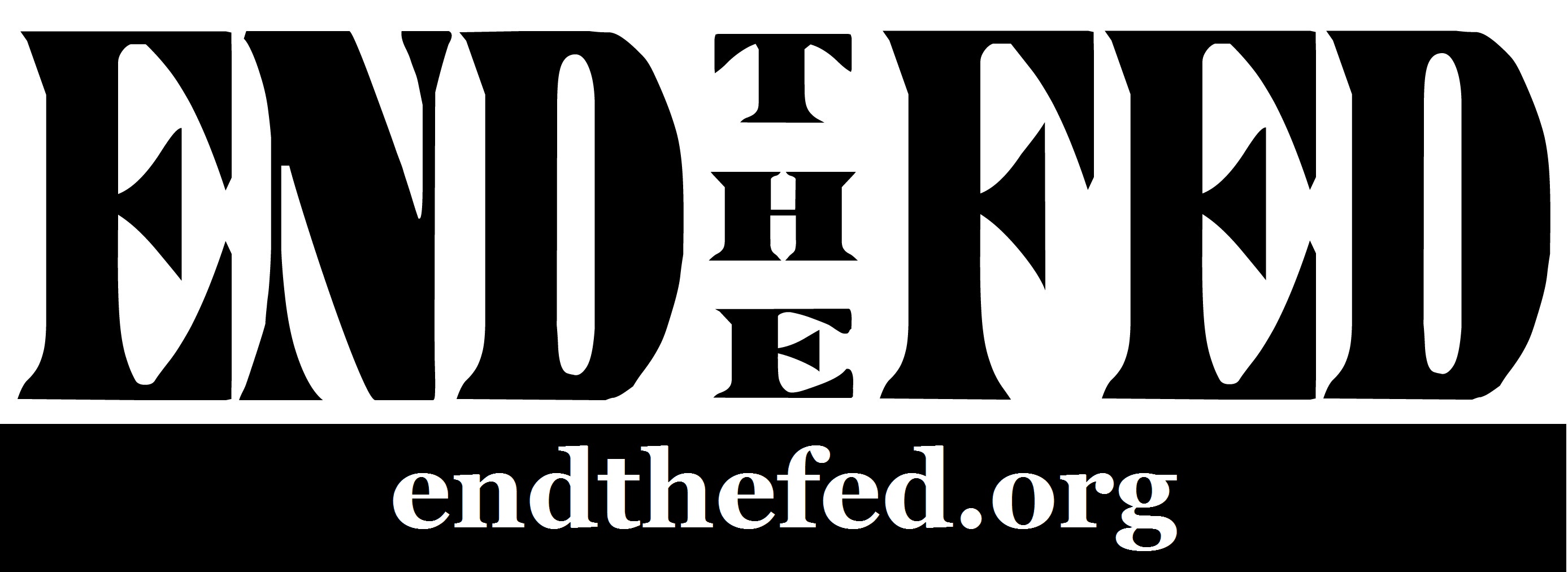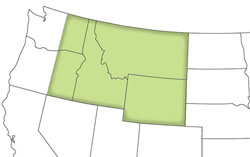“Everything we see hides another thing, we always want to see what is hidden by what we see. There is an interest in that which is hidden and which the visible does not show us. This interest can take the form of a quite intense feeling, a sort of conflict, one might say, between the visible that is hidden and the visible that is present.”
Despotic special interests and their government minions typically vet their own people to the degree of blackmail so as to better control them. For our purposes, we will not stoop that low, but we do need to know who we are dealing with. Too many times have good people been incarcerated because they allowed into their circle of trust a snitch who ended up ratting them out to the cops.
Let me tell you about a man named, “Quigley.” He was a regular attendee at the meetings of the Central Florida Committee of Safety (CFCoS) back in 1995. The CFCoS developed an application for participation that was required of all meeting attendees. At the bottom of the form a seal was required; this meant that any signature was bound to bearing witness or otherwise attesting to certain facts (if you attest, seal or swear falsely, it is considered perjury). On the very first line you would fill in your name and check off a mark next to a “Yes” or “No” in answering the question, “Is this your real name?” A Robert Chapman filled in the application, but when you fast forward approximately two years later to a Tampa courtroom we find out that this exact same individual’s legal name was in fact Robert Quigley, an IRS undercover agent.
As you can no doubt tell from this story, controlled opposition will not hesitate to ingratiate themselves into a political dissident group or organization using whatever it takes, including outright deception; however, they are not the only bunch of undesirables who must be filtered out from the pool of potential recruits available to you. Useful idiots (aka “guess what I know” morons) are equally disruptive, distractive, and otherwise unproductive towards your efforts in securing your Liberty. Since they are prone to all sorts of stupid behavior that can get them in legal trouble with the boys in blue, it is not far fetched to contemplate the likelihood that those who refuse to come clean about their criminal record when being vetted by a serious dissident have something damaging to hide, such as their deposition indicating “adjudication withheld,” or some other type of plea agreement that may very well in fact require them to become states’ evidence informants. Similarly dangerous are the easily swayed informants who are manipulated into spilling the beans to their de facto government handler about a wide array of information concerning the activities of dissident individuals or organizations.
Considering the nature of these threats posed by both controlled opposition and the “guess what I know” morons, it becomes imperative to genuine political dissidents, either acting alone or in concert with others within a group setting, to discriminate amongst whom they choose to associate with. This is done to prevent entrapment (and by extension, incarceration), wasted time, and needless distractions. Even if you happen to maintain contact with or recruit an informant or even a full blown undercover operative, if you compartmentalize any suspected tools of the secret police, then you can keep them isolated and relatively harmless while you go about your real work.
A good first step is to consider having a participation application. The reason for this is not only for the simple purpose of data collection so as to familiarize yourself with the potential recruit, but also to determine his behavior to such a procedure. Some may have no problem with it (such as a veteran freely providing you with a DD#214), others may be at first uneasy considering their genuine privacy concerns (and then relent given the circumstances), and yet a portion will protest all too loudly (which, of course, would initially indicate the possibility that such a person is at least a state’s evidence informant). Anything the potential recruit tells you on the application can be verified by a background check anyway; however, it is imperative to ascertain his truthfulness right from the start. If the Quigley experience taught anyone anything, it is that vetting individuals into a dissident organization needs to be more stringent so as to filter out those who seek to wreck the trust that already existing members have with each other while also still being able to recruit good quality personnel in order to grow the overall effort.
In terms of privacy, potential recruits need not offer more than what they have already given up in order to function within the contemporary mainstream infrastructure. For instance, just to do something as simple as renting an apartment, you are usually required to prove your financial “responsibility” (such as by providing a pay stub or even your bank statements), give your current mailing address, and submit to a criminal background check. Job applications and interviews are in many ways much more invasive, since potential employers also want to know how you carry yourself and even what’s in your head. Excuses made against dissident organizations who prudently vet their recruits by alleging that they are somehow violating the privacy of those recruits stands in direct contradiction to how daily business is normally conducted by these exact same naysayers.
Vetting cannot be done only by correspondence; some form of interpersonal contact with the potential recruit is required. While the telephone can be used as an expedient compromise, the most serious vetting should only occur in local areas where it is realistically possible to meet face-to-face. This is not only done for legitimate security reasons (such as counter-surveillance), but also to allow properly conducted vetting to be truly effective. The following techniques are explained in the context of a face-to-face meeting, but keep in mind that some of them can be slightly altered so their utility can be maximized when vetting over the phone.
After agreeing to meet in person, the next major hurdle is scheduling where and when. Obviously, for the sake of both convenience and some level of privacy, it is preferable to meet on a weekday when everyone else is slaving away at the nine to five grind. While a bar or tavern is a traditional location for such informal meet ‘n greets, might I suggest a locale that won’t raise eyebrows in the middle of day, such as a coffee shop? The seats are more comfortable, the drinks (should you want one) won’t break your budget, and there is even free WiFi that you can use to surf the Net while you wait for the potential recruit to show up.
One key aspect that almost no one mentions when you agree to a face-to-face meeting is how will you recognize each other. Presumably, either due to inertia or conscious privacy considerations, neither of you have emailed photos or VOIP video called each other via webcam. If such is the case, you will need to arrange ahead of time for some recognizable sign so that at least one of you can find the other once both of you have arrived. While it is possible to have this be one-sided (one party is wearing a specific T-shirt or reading a particular book with the cover facing conspicuously outward, for instance), it is preferable for the security and safety of both parties to have mutually agreed upon signals so that all the responsibility does not fall on the searching party; besides, it minimizes the chance that anyone is being set up by government stooges or agents (unless one or both of you were lackadaisical in your Internet communications and your recognition signals were somehow intercepted, in which case you’ll more than likely be put under surveillance, at the very least).
Given that you don’t know whom you’re dealing with initially, so it would be prudent to feel him out first. Attempt to determine his likes and dislikes, his virtues and vices, his cosmopolitan attitudes as well as his prejudices. Only by eliciting responses from him can you even begin to adequately gauge exactly where he is coming from. Keep in mind that he should be talking most of the time, not you; vetting necessarily requires copious details from the potential recruit, not a lengthy sermon from the recruiter.
Don’t fall into the trap of debating with him. Ask him to clarify unclear statements if need be, but don’t ever argue. Nothing is to be gained and everything could be lost by attempting to push him towards acceding to your view on a given topic. Better to cultivate an ally who is 25% on your side than alienate a potential recruit to the point where he instead decides to work 100% for your enemy.
Keep your body language casual yet not flirtatious. What you are essentially doing is conducting the equivalent of a job interview without it feeling like one. The idea here is elicit what you need from him while maintaining the aura of a leisurely conversation. Hunching over, whispering, or otherwise being standoffish is to be assiduously avoided. You want the potential recruit to feel relaxed yet keep him focused on the task at hand without overtly seeming to do so.
As the meeting begins winding down somewhat (which typically happens anywhere from one hour to an hour and a half, presuming it went well), begin making arrangements for either a follow-up meeting or additional privacy measures (such as exchanging PGP keys and the email addresses those keys are used for, which should be completely different from the email address you were using with this potential recruit up until this point). The reason you do this is you want to convey to the potential recruit that you are still interested in him, all the while giving the impression that you are still putting him through the paces, so to speak. What you are really doing is keeping him on the hook at least until you’ve have had some time by yourself to reflect on what just happened, so you can make the very serious decision as to whether to keep in contact with him (and, more than likely, actually recruit him into your organization) or cut him loose. If you decide to do the latter, it would be better to have it occur as a gradual “falling out of contact,” instead of a formal declaration you make to him since by saving face you prevent tipping off a likely informant or government operative (or quite simply just a useful idiot).
Vetting is an art, not a science. Anyone who tells you differently is either naïve kid or a bullshitter (either way, someone whom you’d be better off not recruiting into your organization). Like doing anything worthwhile, it is learned best from experience through lots and lots of practice. I must reiterate, that while it is possible to vet someone over the phone, it is truly best to do it face-to-face; all those 1,001 little indicators that you pick up from a combination of their voice and body language are simply not there if all you have to work with is just their voice. Provided that political dissidents decide to take their work a lot more seriously, vetting can be just that ounce of prevention which naturally filters out scumbags, prima donnas, and assorted troublemakers from the ranks of our foreseeable and inevitable revolution.






















Pingback: Modeling Threats & Analyzing Risk: A Rebuttal Against “Doom Porn” | From the Trenches World Report